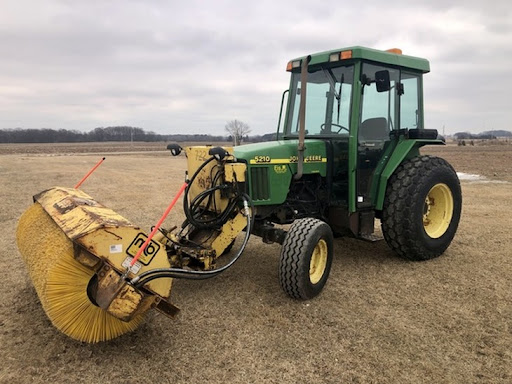What to look for in a Used Tractor
What to look for in a Used Tractor
Buying a used tractor can be a great choice for those looking for a more affordable equipment option. If you choose the right tractor, it can run almost as well as new and be a helpful addition to your operation. But if you don’t take the proper care in inspecting a used tractor you might end up putting more money into repairs than the tractor itself. So what should you look for to ensure you’re making an informed purchase? Read on for some tips on what to look for before buying a used tractor.

1. Know what you need from the tractor
Before starting your search for a good used tractor it’s good to have in mind what you will be needing it for. Will you need it for heavy hauling or landscaping? Mowing or grading? What conditions will this tractor be working in? How long will you be in this tractor? This will determine what your priorities are and what you can and can’t do without.
2. Visual inspection
Before you begin your deep dive, it is good to look over the tractor for any standout signs of wear and tear. This includes scratches, dents, chipped paint, rust, or welding. A few of these visual characteristics might not be detrimental to your decision but too many signs of wear and tear could be a sign of a neglected and tired tractor, which won’t perform as well.
3. Check Tires
Bad tires can lead to you dishing out an extra thousand dollars in replacements. So it is a must to inspect the tires of a used tractor before you purchase to avoid any unpredicted added costs. Check for any red flags such as cracks, bulges, or holes. If you can, use a tire tread depth gauge to determine the remaining tire life.
4. Check for leaks and broken hoses
When you are done with your exterior inspection, take a closer look to see if you spot any leaks from the engine and hoses or any indications of wear and tear. This could be a cause of major concern and costly repairs. Also, check to see if belts and hoses are in good condition. Ideally, all the hoses should be tight with little debris. If parts are covered in black sludge this could mean the oil was not changed regularly.
5. Check Fluids
You're going to want to check all important fluids in the tractor to make sure there are no areas of concern. When you do this, make sure that the engine is off and cool. The engine oil should be a good consistency with no sludge and should be near full on the dipstick. Look at other fluids such as coolant, hydraulic fluid, and power steering oil to ensure it is free of debris and at the maximum mark.
6. Start it up
There are several things you should look for when starting a used tractor. Bring your attention to the wheel and turn it left and right checking for any looseness or anything out of place. If the tractor has power steering, the wheel should turn smoothly without any shakes or jitters. When you put the tractor in motion, be wary of any irregularities like knocking, as this could be a sign of a weak transmission. While the engine is running, you’ll also want to test the PTO shaft- this is crucial for pulling heavy implements. Turn it on and make sure it is running smoothly without any unusual sounds and knocking. Also test out the brakes, pedals and gears to make sure they are working properly.
7. Look at the tractor’s history
Aside from looking into the equipment yourself, it is also good to go through the tractor’s maintenance logs and supporting documents. This can provide insight into previous repairs and how well the tractor was maintained, which could be valuable information about the tractor’s future. Also, inquire about the tractor’s operating hours. Anything over 35,000 is typically considered high for a tractor but it doesn’t necessarily mean it won’t work properly. Just consider if these hours align with your goals for the tractor.
Now that you know what to look for and watch out for in a used tractor, look and see what’s out there. The perfect place to start is Eis Implement. Eis offers affordable and reliable used tractors of multiple brands, years, and models. Contact us or give us a visit at our Two Rivers location to learn more.